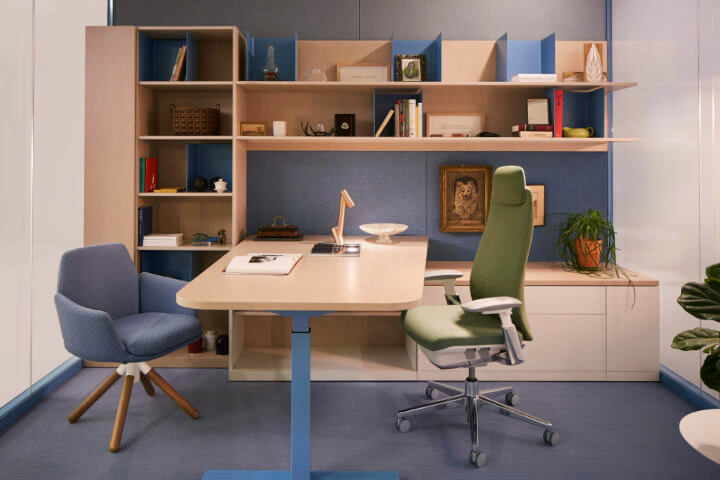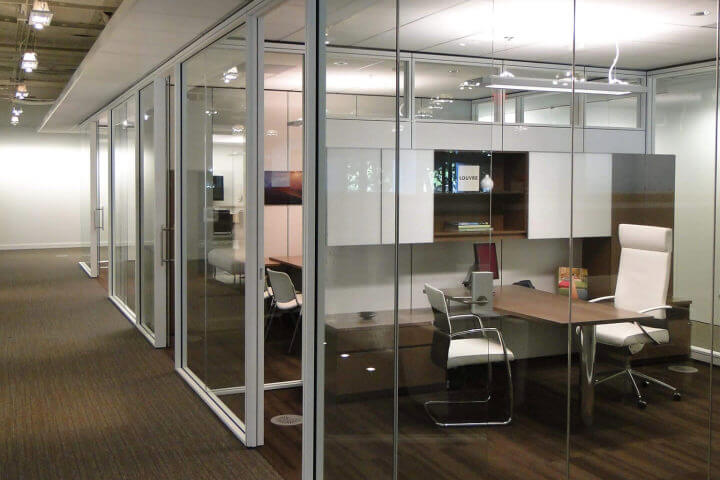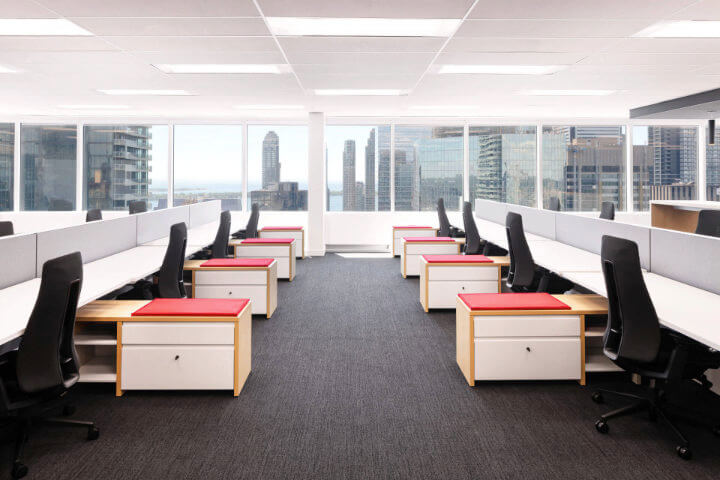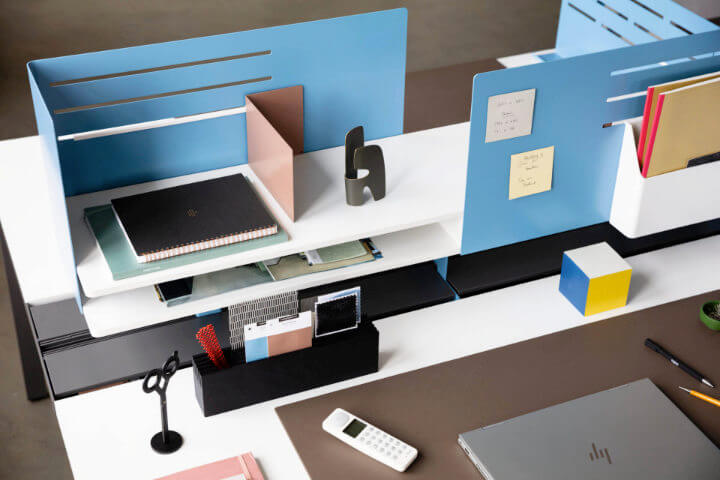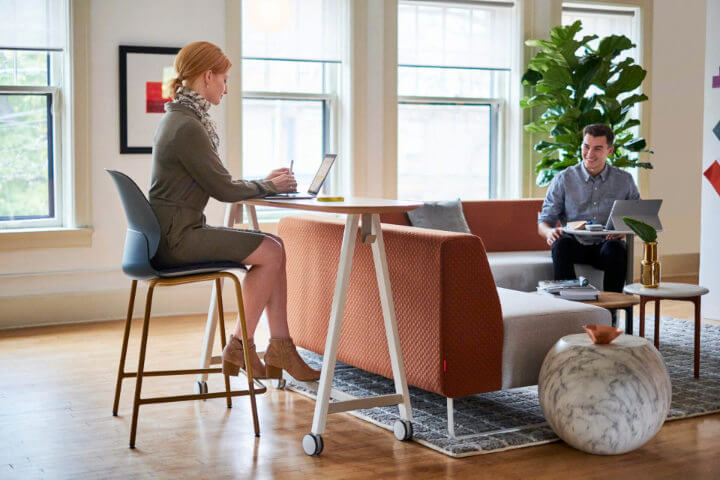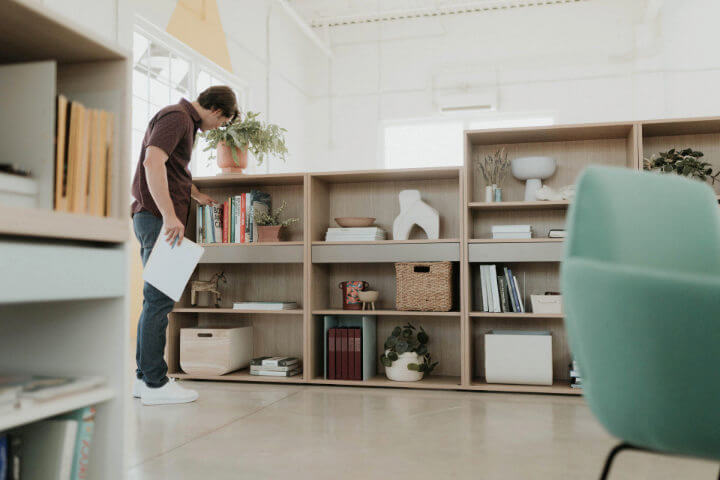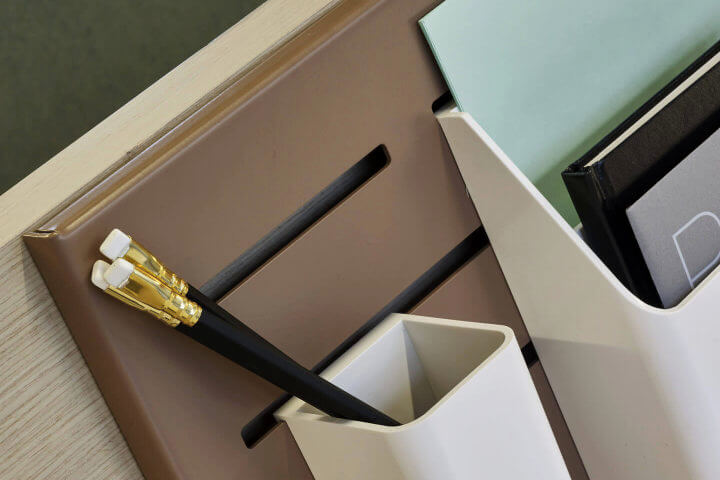Introducing Integrated Palette™ from Haworth
Haworth’s Integrated Palette™ stems from years of research that reflect upcoming changes in how people work, where they work, and evolving organizational cultures. Since 2004, we’ve made a concentrated and continued effort to expand from solely a furniture provider to a provider of complete interior spaces.
By infusing our product designs using seven key design logics, and combining our human, organizational, and facility performance understanding, we created a tremendous differentiator for Haworth — a family of products that are truly integrated, adaptable, and sustainable.
The Integrated Palette offers design freedom, a promise of integration, and future assurance.
Design Freedom
There’s no blueprint like your own blueprint.
The Integrated Palette™ allows for a wide range of Design Freedom — from traditional applications to unconventional, and everything in between. Seamlessly integrating components from different product lines allows designers to have endless possibilities and true design freedom.
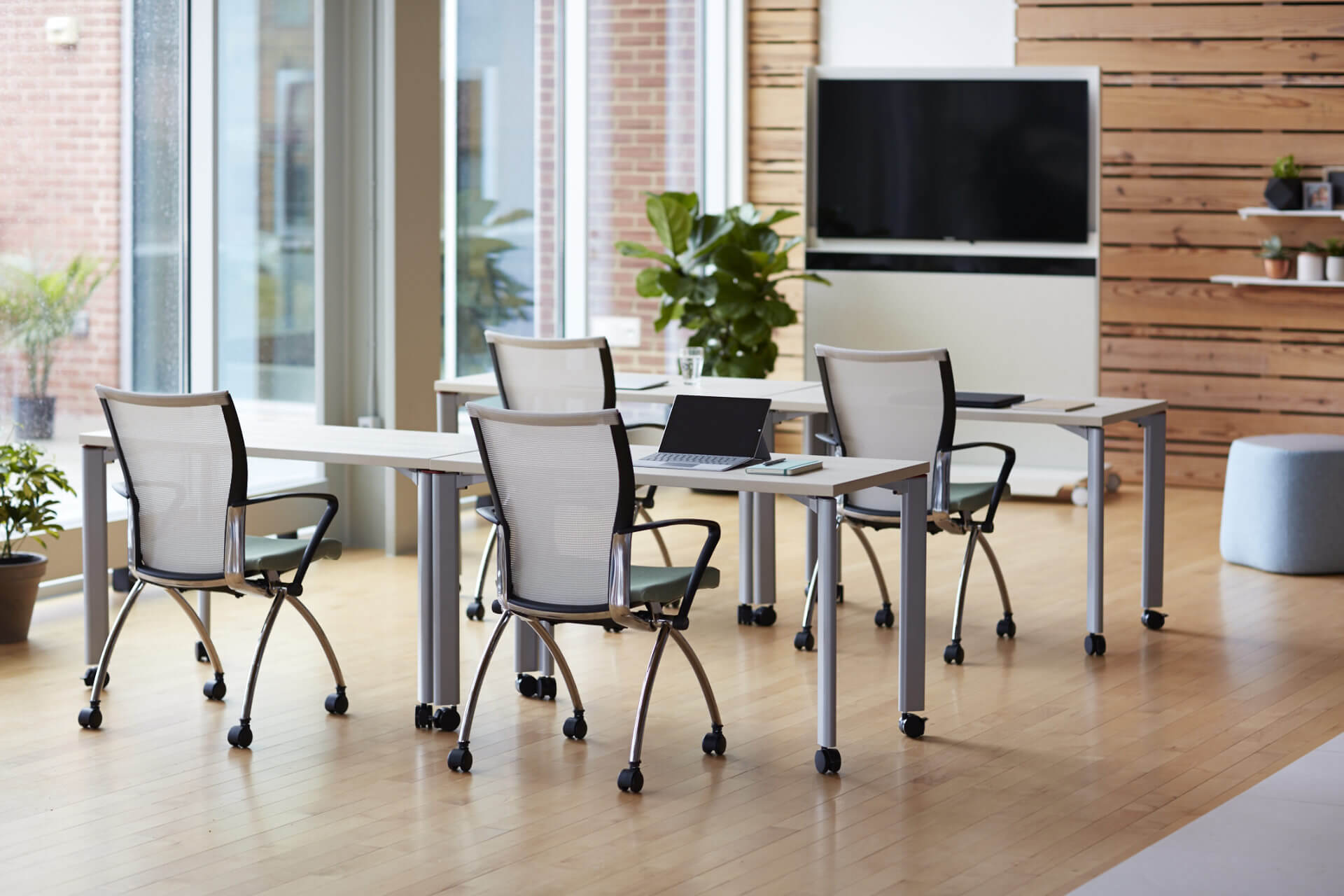
Promise of Integration
Product platforms that integrate and coordinate. Others only coordinate.
Haworth carefully considered the future of building construction, design principles, work styles, and organizational cultures when designing a holistic integrated kit of parts. Each of the variables above must come together in the right way to have a positive effect on worker performance.
The Integrated Palette™ product platforms are engineered across seven design logics, seeing beyond simply coordinating, to true integration that provides limitless opportunities for new spatial designs, as well as future adaptability with the same products.
Future Assurance
Timeless design and unparalleled quality make for lasting partnerships.
Haworth’s Integrated Palette™ offers a sound investment with unparalleled quality and a long-term partnership. Haworth’s future product development will follow the same product design strategy, assuring your interior assets will serve even more application needs and reconfigurations, saving money, waste, and downtime.
Design logic is the reason our products work together so seamlessly.
The Seven Components of Design Logic
Visual Logic
Visual Logic relates to the individual products being visually appropriate and complementary to create a coherent visual landscape. All products look like they were designed concurrently, while remaining timeless and providing the right mix of mass, scale, and proportion at the floor plate level.
Interface Logic
Interface Logic defines how the products relate to the built environment. Interior architecture elements are considered when our products are developed to leverage the connection to a raised floor and ceiling, or any built structure in between.
Interconnectivity Logic
Interconnectivity Logic defines how the products connect to each other between and across platforms. Shared products have a common connection to ensure easy adaptability across platforms.
Dimensional Logic
Dimensional Logic defines the dimensional consistency between product platforms. Common dimensions ensure furniture, systems, and architectural products are compatible with one another for ease of application. Variation in scale and the progression from one scale to another is critical to make certain the space captures a changing rhythm and visual interest, yet feels consistent.
Planning Logic
Planning Logic defines a consistent, coherent, and intelligent relationship when multiple product platforms are applied together. Features include an open-frame panel for both on-modular and off-modular planning, a wide array of planning configurations by combining various platforms, and the ability to span various elevations.
Materials Logic
Materials Logic defines the continuity of materials between product platforms, clarifying strategic distinctions and overlap. This logic encompasses Design for Environment strategies that ensure the degree of sustainability that all products will possess or attempt to achieve. Forward-thinking toward reclaiming/reusing/recycling ensures that materials are as sustainable as possible, while retaining superior performance.
Finish Logic
Finish Logic defines the scope and rationale for finish selection and specification. A simplified offering of basic elements like wood, glass, fabric, and laminates can be combined to create a range of visual “moods”. Finishes between product platforms are consistent in availability and longevity, and the compatibility of finishes across products eases the specification process.

